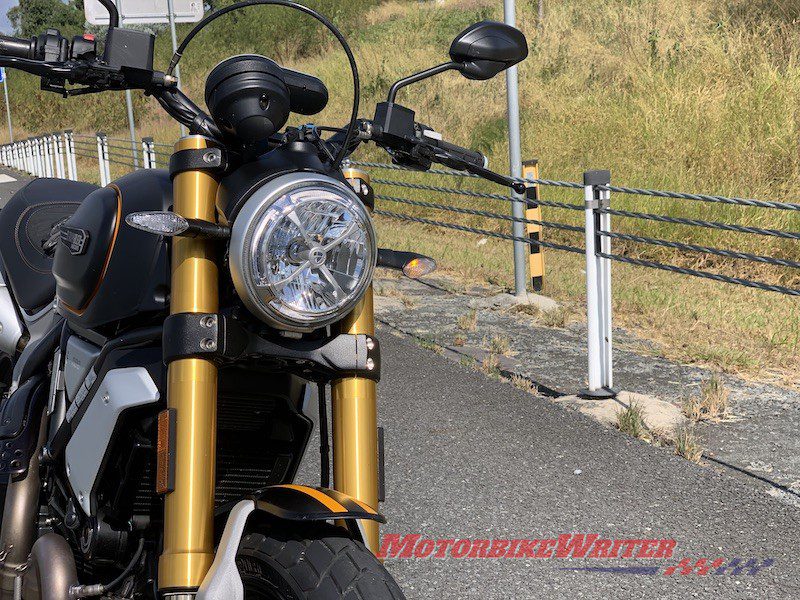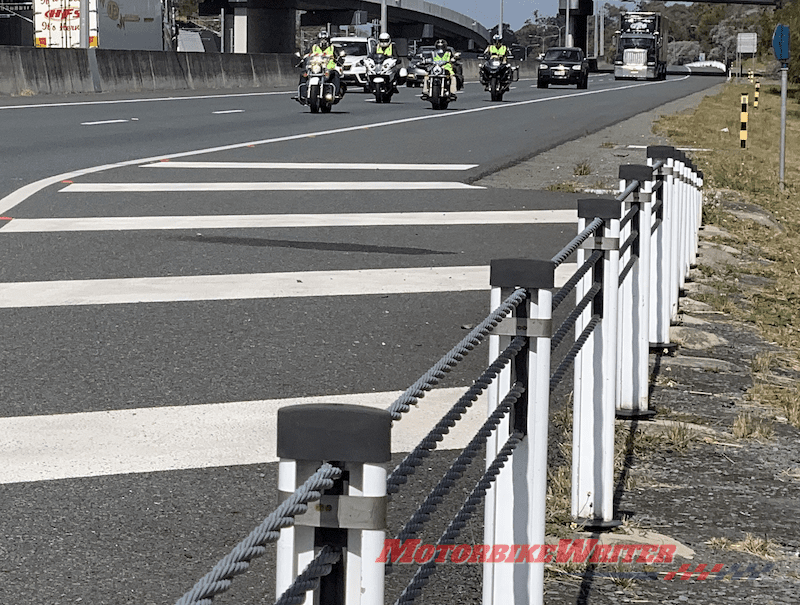Riders are being urged to make submissions about the perceived dangers of wire rope barriers to a Victorian inquiry into the road toll.
Committee member and Liberal MP for Western Victoria, Beverley McArthur, invited Motorcycle Safety Consultant John Nelson to make a submission on the perceived dangers of wire rope barriers, saying the remit of the committee is “very wide”.
She says a public submission “doesn’t need to be long, or detailed, or deal with all potential causes”.
Many submissions are “less than a page long, and detail a specific idea or experience”, she says.
John has long campaigned against WRBs and recently warned of the rollout of higher wire rope barriers which could be even more dangerous to riders.
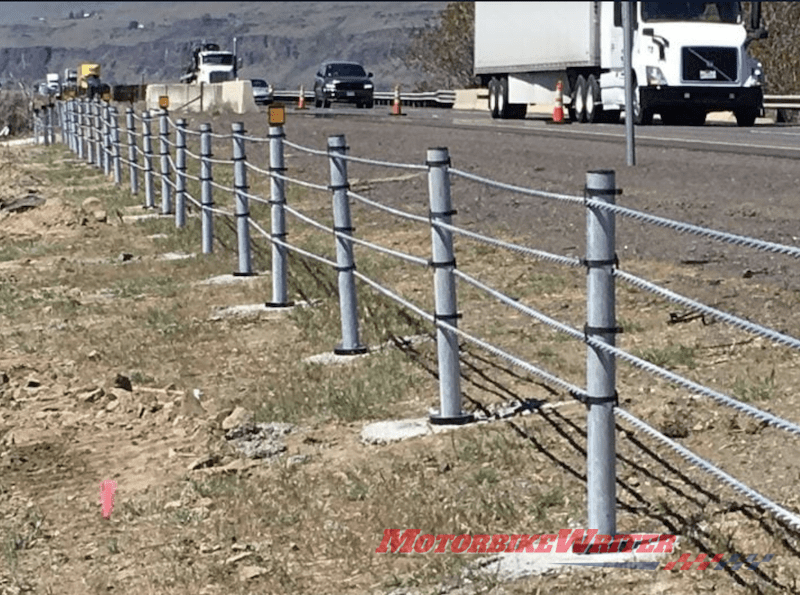
“I encourage all Australian riders to make a submission no matter how small,” he says.
“Every submission will be read and considered. Be vocal and to the point. Silence and apathy does not achieve change.”
Inquiry remit
Beverly told John in an email that the inquiry will consider all areas of road safety, including existing ‘solutions’.
“There is an important opportunity to investigate the whole issue of wire rope barriers thoroughly,” she says.
“It would be helpful, however, if you could encourage anyone who feels strongly to write in and briefly explain their opposition.
“The more submissions we get to that effect, the better the chance we will have of making it a high profile part of the inquiry.
“I’d be grateful if you could pass this on to anyone who you know feels strongly about this.
“Having looked through the submissions to date, I only saw one which raised wire rope barriers, so I thought I would pass this on in the hope of stirring up some interest.”
John’s call for submissions on wire rope barriers follows his recent concerns about new wire rope barriers that will soon replace the current WRBs around Australia.
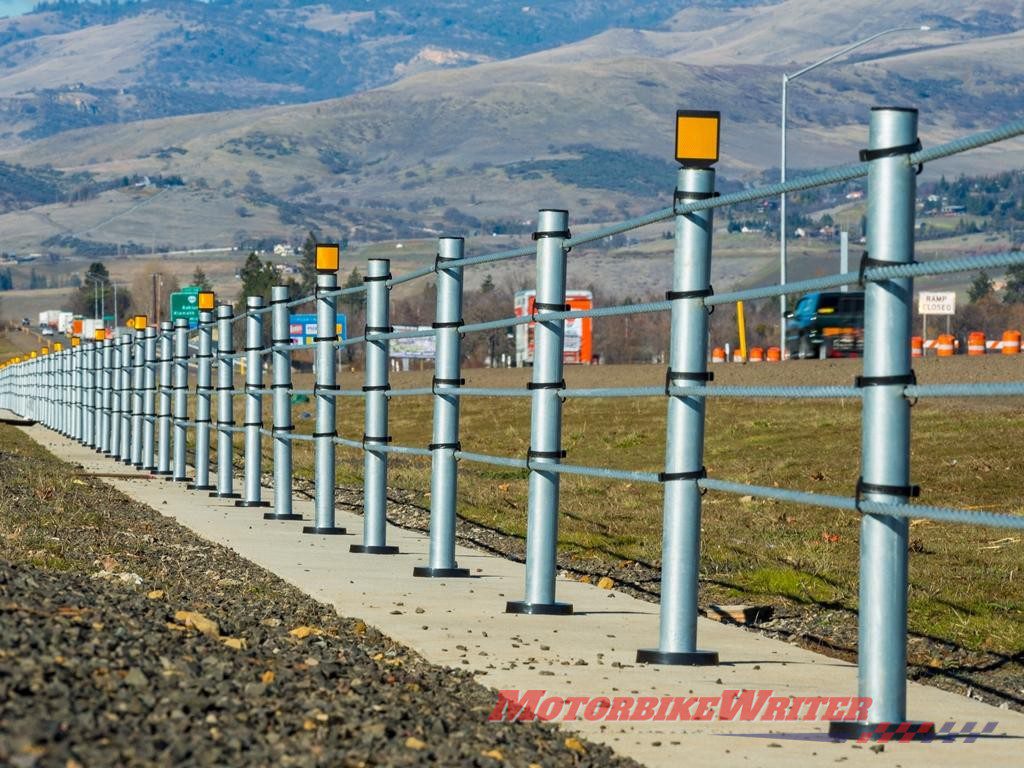
Supplier Safe Direction say the Brifen system has been crash tested.
However, John says the new barrier type is primarily designed for cars and SUVs.
“Crash testing for motorcycles would not have been done, simply because the outcomes are already known,” says John who has also been a rider trainer and crash analyst.

“I was shocked to see the new WRB design and wonder how Brifen can create a barrier system that is even worse for motorcyclists impacting the barrier directly.
“The only scenario that is being touted by the road safety community is the out-of-control oncoming vehicle, and a rider is going past the site.
“Each time I challenge the pro-WRB community to show the research and evidence that WRB saves motorcyclists, they can’t, won’t and disappear.”
New design



The new design is higher and the cable is spread over a wider area with less space at the bottom.
John says the original design meant riders were prone to going over the top and being injured by the cable and posts.
“The new design would keep a rider from going over the top and extrude a body through the cable and posts,” he says.
Many riders view wire rope barriers as “people slicers”.
However, Australian road safety consultancy Safe System Solutions Pty Ltd Research and Evaluations Lead and motorcyclist Dr Tana Tan says they have no issue with wire rope barriers on straights as riders don’t tend to fall asleep as much as drivers.
“That’s because we have limited tank range so we stop more frequently, we generally monitor our fatigue better and we have to be alert to ride,” he says.
“The issue is with placing WRBs on curves.”
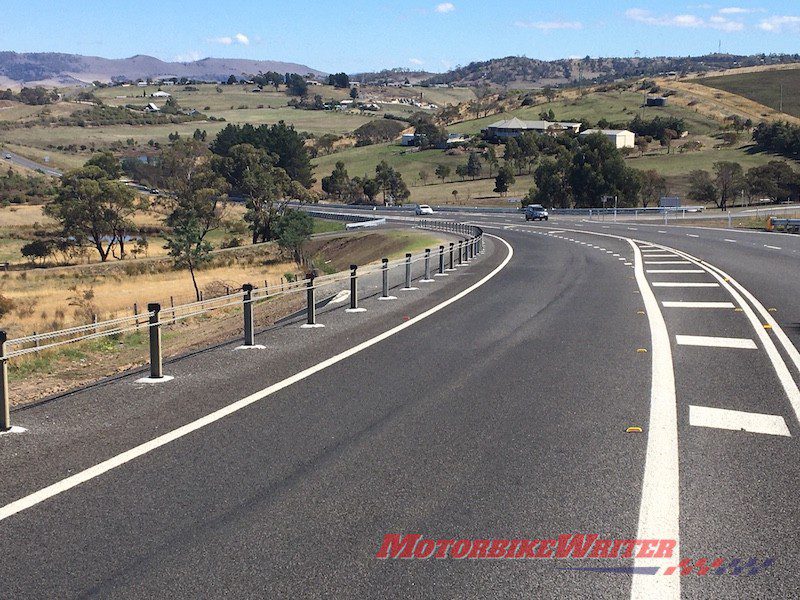


Transport departments throughout Australia adhere to the standards published in the Austroads Guide to Road Design which do not permit wire rope barriers on curves of less than 200 metre radius.


